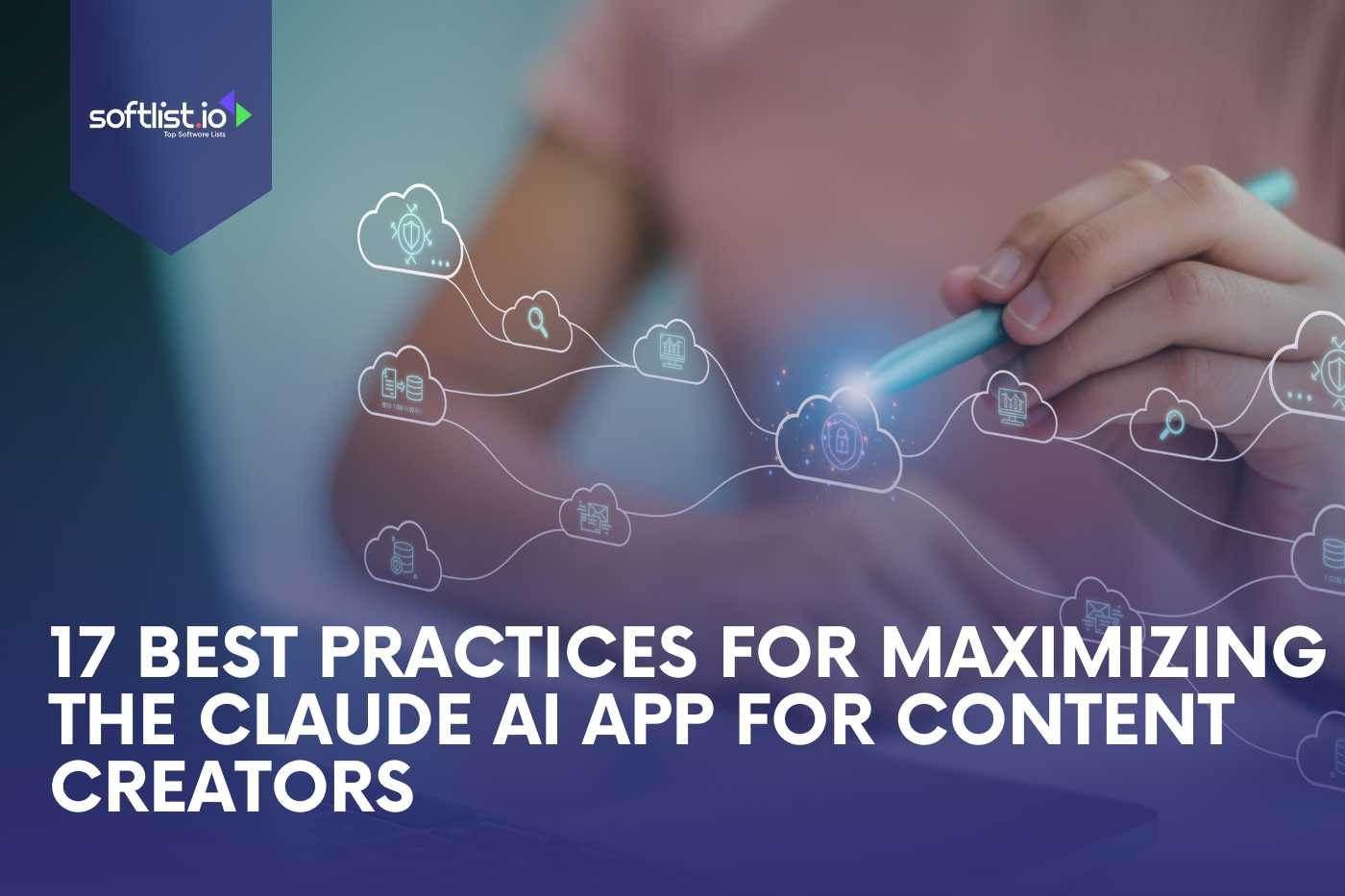Starting with SEO content writing can feel tough. It’s not just about writing good stuff; you also need to ensure people can find it online. This means learning new rules and tips, which can change often. You as a beginner might make simple mistakes like using too many keywords or not making your site easy to use on phones.
But, with some practice and learning the basics, even new writers can make their content easy to find and read online, making the whole process less scary and more fun.
We’ll go over 15 easy but effective SEO content writing tips that are perfect for newbies. These tips will not only make SEO less scary, but they will also help your content move up in the search engine rankings and get seen by people who want to read it.
What is SEO Writing?
SEO writing is the process of creating content that’s designed to rank highly in search engine results pages (SERPs). This involves using specific keywords and phrases that people are likely to search for when looking for information on a particular topic.
The goal is to make the content both informative and visible to search engines so it can attract more traffic to a website. SEO writing combines the art of engaging and persuasive writing with the science of search engine algorithms, optimizing content to ensure it’s found by the target audience.
Benefits of SEO Content Writing
- Increased Visibility: Helps your website appear higher in search engine results, making it more likely that people will find your content.
- More Organic Traffic: Attracts a larger audience without the need for paid advertising, leading to more visitors coming directly from search engines.
- Improved User Experience: SEO content is often structured and informative, making it easier for readers to find the information they need and stay engaged.
- Higher Credibility and Trust: Websites that rank higher in search results are generally perceived as more credible and authoritative by users.
- Better Conversion Rates: Quality SEO content can lead to higher engagement and conversion rates, as it targets users who are actively searching for information related to your products or services.
- Competitive Advantage: Outranking competitors in search results can give you a significant advantage in attracting more traffic and customers.
- Long-Term Results: Unlike paid advertising, the benefits of SEO content writing can last much longer, providing enduring value over time.
- Cost-Effectiveness: SEO is one of the most cost-effective marketing strategies because it targets users who are actively looking for your products or services online.
15 Tips and Techniques for Creating SEO-Optimized Content
With these 15 SEO-friendly tips and tricks, you can get the most out of your online content. With these tips, you can make your content more visible and get more people to interact with it, from using keywords to making your posts easier to read. Let’s hop in!

Source: Canva Pro
1. Understand Your Audience
To create content that resonates and performs well, you first need to understand your audience. This involves identifying the characteristics, needs, and online behavior of the people you want to reach.
Moreover, tailoring your content to meet their specific interests, challenges, and questions can significantly increase engagement and relevance. Knowing your audience helps in crafting messages that are not only found but also valued and shared.
2. Conduct Thorough Keyword Research
Keyword research is the cornerstone of SEO. It involves identifying the words and phrases that your target audience uses when searching for information, products, or services related to your content.
By integrating these keywords naturally into your content, you improve its visibility and searchability on search engines. This helps align your content with the queries your audience is making, thereby driving more relevant traffic to your site.
How to Implement:
- Use Keyword Research Tools: Use tools like Google Keyword Planner, SEMrush, Ahrefs, or Moz to find relevant keywords and phrases related to your content.
- Analyze Search Intent: Understand the intent behind the searches—whether users are looking for information, making a purchase, or seeking a particular website.
- Look at Competitors: Identify what keywords your competitors are ranking for and consider how you can incorporate similar or better keywords into your content.
- Choose Long-Tail Keywords: Opt for long-tail keywords (phrases that are longer and more specific) as they often have less competition and a higher conversion rate.
3. Understand Search Intent
Search intent refers to the purpose behind a search query. Understanding search intent is crucial for creating content that meets the specific needs of users at different stages of their journey. Whether they’re looking for information, a particular product, or a service, tailoring your content to match this intent can significantly boost its relevance and effectiveness.
This ensures that your content directly addresses the questions or needs of your audience, improving engagement and satisfaction.
4. Explore Search Engine Results Page (SERP)
The SERP is a wealth of information about how search engines like Google understand and prioritize content for different queries. By analyzing the types of content that rank highly for your target keywords, you can gain insights into what search engines and users find valuable.
Moreover, the right content format plays a significant role in satisfying search intent. Common formats include how-to guides, list posts, step-by-step tutorials, definition blog posts, and comparison posts. To determine the most effective format for your topic, analyze the top-ranking pages on Google for your target keywords.
This can inform your content strategy, helping you to produce content that is more likely to earn a high ranking. Paying attention to featured snippets, “People also ask” sections and other SERP features can also offer guidance on how to structure and optimize your content.
5. Understand Google’s Algorithm
Google’s algorithm is a complex system used to retrieve data from its search index and instantly deliver the best possible results for a query. It takes into account various factors, including keywords, site usability, and the quality of content, to rank websites.
Staying updated with Google’s algorithm changes is crucial for SEO success. It helps in adapting strategies to maintain or improve your content’s search engine rankings. Understanding these criteria allows you to optimize your content to align with how Google assesses and ranks web pages.
6. Write for Humans, Optimize for Search Engines

Source: Canva Pro
Creating high-quality content that appeals to your readers while also being optimized for search engines is a delicate balance. As a content writer, your primary focus should be on providing value to your audience with engaging, informative content.
Once you have content that resonates with humans, incorporate SEO best practices such as using keywords naturally and improving readability to make it easy for search engines to crawl and index your content. This approach ensures your content is accessible to a wider audience without sacrificing quality or readability.
7. Craft Compelling Headlines and Titles
Headlines and titles are crucial for attracting attention in search results. A compelling headline not only piques interest but also promises value, encouraging users to click through your content. Use relevant keywords in your titles to improve SEO and ensure your content is discoverable.
However, avoid clickbait tactics that can lead to high bounce rates and potentially harm your search rankings.
8. Use Meta Descriptions to Your Advantage
Meta descriptions provide a brief overview of what your page is about. Although they don’t directly influence rankings, they impact click-through rates (CTR) by offering searchers a snippet of what to expect, which can persuade them to click on your link.
Ensure your meta descriptions are concise, include target keywords, and accurately summarize the page content to improve visibility and attract more clicks from search results.
9. Structure Your Content with Subheadings
Using subheadings (H2, H3, etc.) to structure your content makes it more readable and accessible for both users and search engines. It helps break down content into manageable sections, making it easier for readers to scan and find information.
Additionally, incorporating keywords into subheadings can further optimize your content for search engines, enhancing its discoverability and relevance.
10. Make Your Content Easy to Read
This is crucial for both SEO and user engagement. When content is well-structured and straightforward, it keeps readers engaged and reduces bounce rates, signaling to search engines that your website is valuable.
To enhance readability, focus on organizing your content with clear headings, subheadings, and bullet points. This structure not only helps readers navigate through your article but also allows search engines to understand better and index your content.
Additionally, avoid jargon and complex vocabulary, and use short paragraphs and sentences to make the text easier to digest, encouraging visitors to spend more time on your page.
11. Avoid Keyword Stuffing and Use them Naturally
Gone are the days when cramming a web page with keywords could guarantee high rankings. Today, search engines, especially Google, prioritize content that integrates keywords seamlessly, ensuring that the text remains relevant and provides value to the reader.
Overusing keywords can lead to penalties for keyword stuffing, negatively impacting your site’s SEO performance. Instead, focus on including keywords in a way that feels natural within the context of your content, including in the title, headings, and throughout the text, to maintain both readability and relevance.
12. Optimize Your Images
Images can significantly enhance articles, making them more engaging and shareable. However, search engines cannot “see” images the same way humans do, so it’s important to use descriptive filenames and alt text for each image.
This practice helps search engines understand and index your images properly, contributing to the overall SEO of the page. Moreover, optimizing image sizes and formats can improve page load times, a critical factor for SEO and user experience.
By ensuring your images are both appealing and optimized for search engines, you can enhance your content’s visibility and rank well.
13. Link to High-Quality External and Internal Pages
Incorporating links to reputable external websites and relevant internal pages within your content is a strategic approach to enhance SEO and user engagement.
External links to authoritative sites can lend credibility to your content, showing that it’s well-researched and trustworthy, while internal links encourage visitors to explore more of your website, reducing bounce rates and increasing the time spent on your site.
How to Implement:
- Choose Relevant Links: Whether linking internally or externally, ensure the links are relevant to the content of the page and add value for the reader.
- Prioritize Quality: Link to reputable, authoritative sites for external links, and ensure internal links point to pages that offer in-depth information or related topics.
- Use Descriptive Anchor Text: The clickable text in a link should be descriptive and give an idea of what the linked page is about, which helps with SEO and improves user experience.
14. Update Your Content Regularly
Keeping your website’s content up-to-date is critical for maintaining its relevance and effectiveness in attracting and retaining visitors. Regular updates ensure that your content reflects the latest trends, research, and data, making it more useful and engaging for your audience.
Moreover, frequently refreshed content encourages search engines to crawl your site more often, which can lead to better visibility and higher rankings.
How to Implement:
- Set a Review Schedule: Periodically review your content to identify pages that need updates, whether due to new developments in the field or outdated statistics or references.
- Update Substantially: When updating content, make sure the changes are significant. This could mean adding new sections, updating data, or enhancing the readability and structure of the page.
15. Use Analytics to Monitor Performance

Source: Canva Pro
Analytics provides insights into metrics such as page views, bounce rates, and conversion rates, enabling you to pinpoint which pieces of content are performing well and which are not meeting expectations.
By analyzing this data, you can make informed decisions about how to optimize your content strategy, focusing on topics, formats, and marketing techniques that resonate most with your audience.
How to Implement:
- Install Analytics Tools: Tools like Google Analytics can be installed on your site to track various metrics, including page views, bounce rate, and conversion rates.
- Regularly Review Analytics: Make it a habit to check your analytics regularly to spot trends, track the performance of newly updated or created content, and identify areas for improvement.
- Act on Data: Use the insights from your analytics to make informed decisions about your content strategy, such as topics to focus on, types of content to produce, and areas where the user experience can be improved.
Final Thoughts on the SEO Content Writing Tips
Crafting effective SEO content is key for beginners looking to make their mark online. The 15 tips we’ve discussed provide a solid foundation, covering everything from keyword use to optimizing headlines and engaging your audience. By applying these techniques, you’ll not only attract more viewers but also keep them interested.
For those eager to delve deeper and truly elevate their content, our SEO tools articles are a must-read. They offer insights into tools that can help refine your SEO strategy, making your content work harder for you. Check out these articles on our website and start enhancing your SEO skills today.
Frequently Asked Questions
What are the basics of SEO?
SEO, or Search Engine Optimization, is the process of optimizing a website to increase its visibility and ranking on search engine results pages (SERPs). The basics of SEO involve several key elements: keyword research, on-page optimization, and off-page optimization.
How does SEO writing differ from regular content writing?
While regular content writing focuses on creating informative and engaging content for readers, SEO content writing also incorporates specific strategies aimed at improving visibility and ranking on search engines.
Should I focus on on-page or off-page SEO?
Both on-page and off-page SEO are important for a successful SEO strategy. On-page SEO involves optimizing the content and structure of your website, while off-page SEO focuses on building backlinks and improving your website’s authority and reputation.
How long should SEO content be?
The ideal length for SEO content varies depending on the topic and audience’s needs. Generally, longer content (around 1,000 to 2,000 words) tends to rank better on search engines as it is seen as more authoritative and comprehensive. However, the quality of content and its ability to satisfy user intent is more important than length alone.
How often should I update my website’s content for SEO?
Updating your website’s content regularly is crucial for maintaining and improving its SEO performance. Search engines favor websites that frequently update their content with fresh, relevant, and high-quality material. A good practice is to update your content at least once a month, but more frequently if possible.







